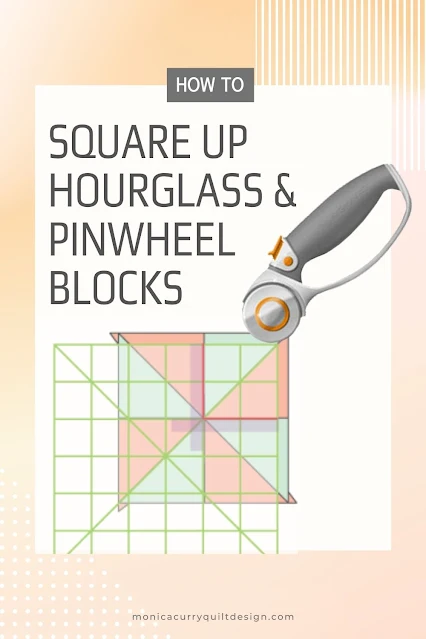This post is a supplementary tutorial for the Quick Block Calculator.
In this post, I'll show you a simple method for squaring up Hourglass, Pinwheel, and Half Square Triangle blocks that doesn't require a special ruler.
MATERIALS
- Square quilt ruler at least 8" x 8".
- Rotary cutter
- Masking tape or transparent quilt ruler tape.
INSTRUCTIONS
Hour Glass- Divide the desired block size in half, e.g. 4½"÷ 2 = 2¼"
- Find this number on the ruler.
- Place a piece of tape horizontally and vertically on the ruler to mark the center of the block.
- Line up intersecting point of the tape with the center of the block.
- Line up the 45º angle with angle of the block.
7. Turn the ruler and block 180º and, once again, line up the halfway point with the center of the block.











































